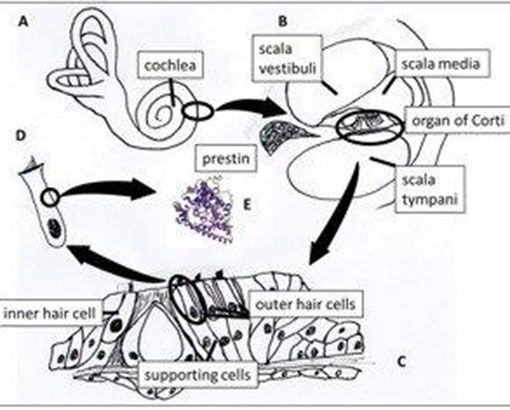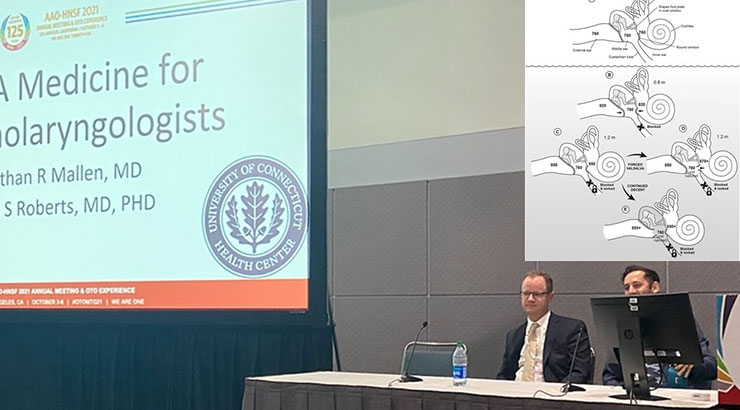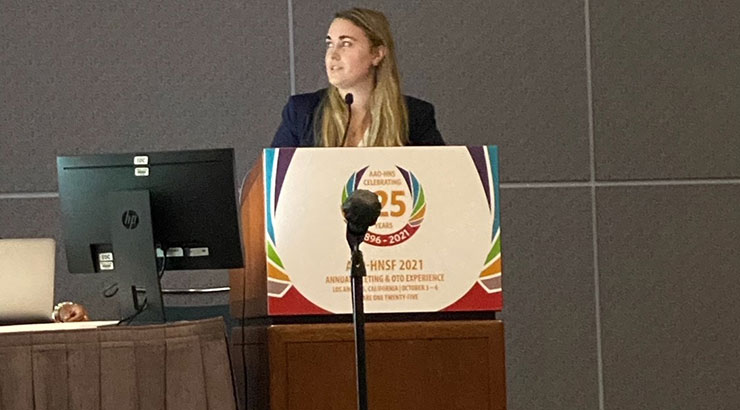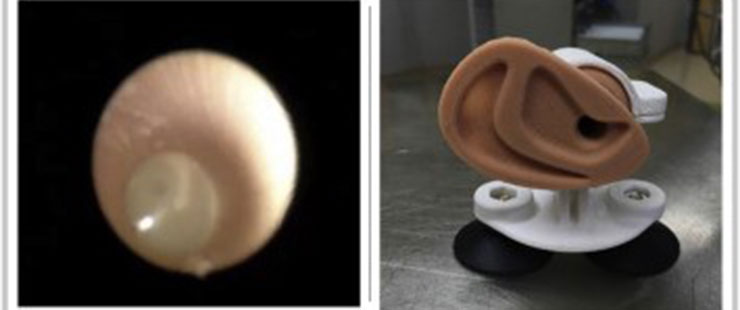Listed below are selected faculty research activities within the Division of Otolaryngology – Head & Neck Surgery and key investigators with whom we have collaborated or who have mentored resident research activities.
General Otolaryngology
Kourosh Parham, M.D., Ph.D., Professor, Department of Surgery, Division of Otolaryngology – Head & Neck Surgery
Dr. Parham is a general otolaryngologist whose current primary focus of research is on the development of otologic biomarkers that may facilitate early diagnosis of inner ear disorders involving both sensorineural hearing loss and vertigo. This work is takes advantage of the unique inner ear proteins that make its specialized functions possible. This work is currently funded by American Tinnitus Association Donald Bowman Innovation in Tinnitus Research Grant Award to investigate serum prestin as a biomarker for tinnitus (October 2021 – September 2022). Recent publications include:
Mulry, E. & Parham, K. Inner ear proteins as potential biomarkers. Otology & Neurotology. 2020.

Other areas of interest include thyroid/parathyroid disease:
Todd Falcone, M.D., Associate Professor, Department of Surgery, Division of Otolaryngology – Head & Neck Surgery
Dr. Falcone maintains broad interests that range from wellness to infectious disease. His main research project is currently focused on tolerability of diluted povidone-iodine in the sinonasal and oral cavities as antisepsis in healthy volunteers during the Covid-19 pandemic, supported by COVID-RSF grant from the UConn Office of the Vice President for Research.
Examples of his recent publications include:
OTOLOGY/NEUROTOLOGY
Daniel Roberts, M.D., Ph.D., Assistant Professor, Department of Surgery, Division of Otolaryngology – Head & Neck Surgery
Dr. Roberts’ main research focus is on otology/neurotology exemplified by effort to define the genome of acoustic neuromas. This work has been funded by grants from the House Ear Institute and engages Jackson Laboratory resources and expertise. Insights form this work may identify new treatment modalities in management of acoustic neuromas.
Other research projects include investigations of the impact of cochlear implants on tinnitus suppression and collaborating with other investigators here at UConn to define the midbrain substrates that may be contributing to tinnitus. This work is funded by the Department of Defense.
Another active project is the characterization of the microbiome in the ear, sinuses, throat and larynx, also being carried out in collaboration with The Jackson Laboratory.

Examples of his recent publications include:
Mallen JR, Chiu J, Marquis H, Ottochian A, Perez E, Kuo CL, Otto S, Ryan T, Roberts DS. Quantifying tinnitus suppression in cochlear implantation using tinnitus interval-limited tracking. Laryngoscope. 2020.

Laryngology
Denis Lafreniere, M.D., Professor, Department of Surgery, Division of Otolaryngology – Head & Neck Surgery
Dr. Lafreniere is amongst the pioneers of integration of objective taste and smell testing into clinical practice. He is also actively investigating posterior glottis stenosis using experimental models.
An example of his publications includes:
Pediatric Otolarngology
Katherine Kavanagh, M.D., Associate Professor, Connecticut Children's, Department of Otolaryngology – Head & Neck Surgery
Dr. Kavanagh is a pediatric otolaryngologists who actively investigates methods and protocols to improve airway management. Another focus of Dr. Kavanagh’s research improvement of resident education through development and integration of novel simulation models for otolaryngology training and well being.
Examples of her recent publications include:

Rhinology
Seth M. Brown, M.D., MDA, FACS, Associate Clinical Professor, Department of Surgery, Division of Otolaryngology – Head & Neck Surgery
Belachew Tessema, M.D., FACS, Associate Clinical Professor, Department of Surgery, Division of Otolaryngology – Head & Neck Surgery
Drs. Tessema and Brown investigate mechanisms underlying of sinonasal disease and their respective treatments. During the Covid-19 Pandemic, the put their insights to work to protect patients and healthcare workers by introducing Povidone-Iodine rinses into the literature.
Examples of their recent publications include: